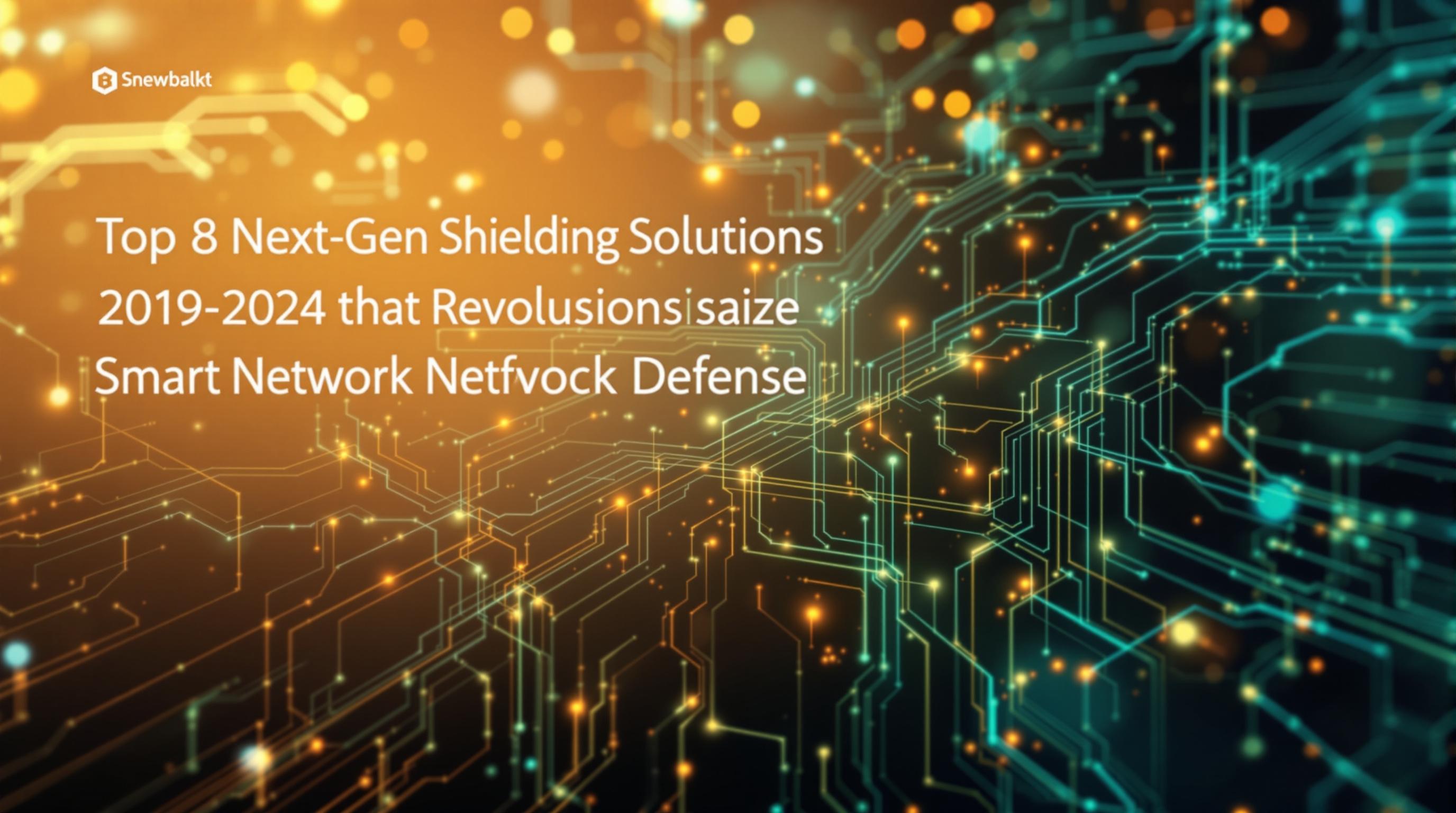Related Articles
- 7 Game-Changing Encrypted Messaging Apps Released Since 2019 That Redefine User Control
- Exploring Quantum Entanglement as a Future Layer of Protection for Connected Devices in Decentralized Networks
- Top 7 Privacy-Focused Cloud Backup Services Released Since 2019 That Redefine Data Control
- Exploring Psychological Barriers That Prevent Wider Adaptation of Dual Verification in Everyday Tech Use
- Top 6 Privacy-Focused Browsers from the Last Five Years That Outpace Giants in Speed and Security
- 6 Lesser-Known Identity Protection Gadgets From the Last Five Years That Actually Outperform Popular Brands
Top 7 Revolutionary Endpoint Protection Platforms Launched Since 2019 Transforming Device Defense
Top 7 Revolutionary Endpoint Protection Platforms Launched Since 2019 Transforming Device Defense
Top 7 Revolutionary Endpoint Protection Platforms Launched Since 2019 Transforming Device Defense
Introduction to Modern Endpoint Protection
In the rapidly evolving digital landscape, endpoint protection platforms (EPPs) have become critical to safeguarding devices against increasingly sophisticated cyber threats. Since 2019, a new wave of innovative solutions has emerged, redefining what device defense means in practice. These platforms integrate artificial intelligence, machine learning, and cloud technologies to deliver more proactive and adaptive security.
Today's endpoints—ranging from laptops and smartphones to IoT devices—are the gateways to sensitive corporate and personal data. As remote work and hybrid environments expand, the attack surface broadens, demanding more robust and intelligent protection mechanisms. Revolutionary EPPs launched since 2019 not only detect threats but also anticipate and neutralize them before damage occurs.
This article explores the top seven game-changing endpoint protection platforms that have set new industry standards. Drawing from industry reports, technology briefings, and expert analyses, we look at how these platforms revolutionize device defense, embracing innovative approaches to tackle modern cybersecurity challenges.
1. CrowdStrike Falcon: AI-Powered Endpoint Security
CrowdStrike Falcon, launched with revolutionary updates post-2019, leverages cloud-native architecture combined with artificial intelligence to offer real-time threat detection and response. Built on a lightweight agent, Falcon minimizes system impact while delivering comprehensive visibility across all endpoints.
The platform’s machine learning algorithms identify suspicious behavior and zero-day exploits by analyzing vast amounts of telemetry data in milliseconds. Falcon's ability to unify endpoint detection and response (EDR) with threat intelligence allows organizations to swiftly contain breaches and remediate vulnerabilities.
According to Forrester’s 2020 Wave Report on Endpoint Security, CrowdStrike consistently ranks as a leader due to its innovative cloud approach and automated threat hunting capabilities. Its success underscores the shift towards AI-enhanced endpoint defense as a necessity in modern cybersecurity strategies.
2. SentinelOne Singularity: Autonomous Endpoint Protection
SentinelOne's Singularity platform, updated since 2019, introduces autonomous endpoint protection that encompasses prevention, detection, response, and hunting in a single solution. Singularity utilizes behavioral AI models that can operate both in cloud and disconnected environments, making it resilient against sophisticated attacks.
One of its unique features is the ‘ActiveEDR,’ which provides automated remediation and rollback capabilities. This means the platform can not only detect threats but also revert an endpoint to a pre-attack state without human intervention, minimizing downtime and operational impact.
Industry analyses from Gartner have highlighted SentinelOne for its streamlined integration and ability to counter increasingly complex threats autonomously. Its fourth-generation EPP marks a notable advancement in enabling defenders to keep pace with cyber adversaries.
3. Microsoft Defender for Endpoint: Integrated Enterprise Security
Since 2019, Microsoft Defender for Endpoint has evolved into a comprehensive platform integrating seamlessly within the Microsoft ecosystem. Leveraging cloud-scale analytics, it offers endpoint behavioral sensors, threat intelligence, and post-breach detection capabilities, all orchestrated from a centralized Microsoft 365 Defender portal.
This solution supports hybrid networks and multiple operating systems, including Windows, macOS, Linux, Android, and iOS, reflecting modern enterprise diversity. Its automated investigation and remediation tools reduce alert fatigue, providing security teams actionable insights and prioritized responses.
Microsoft’s ongoing investment in AI and partnerships with threat intelligence providers empower Defender to predict attacker techniques with high accuracy. As enterprises look for holistic security approaches, Defender’s integration within broader digital environments positions it as a transformative endpoint defense tool.
4. Sophos Intercept X: Deep Learning and Exploit Prevention
Sophos Intercept X, significantly enhanced post-2019, incorporates deep learning AI to detect both known and unknown malware with impressive accuracy. Its multi-layered approach combines signature-based detection with advanced exploit prevention, anti-ransomware technology, and active adversary mitigations.
Notably, Sophos pioneered CryptoGuard, designed to roll back ransomware-encrypted files automatically. This mechanism adds a persuasive layer of defense, especially as ransomware attacks continue to rise globally. Combined with Sophos Central management, the platform delivers centralized visibility and controls across hybrid environments.
Cybersecurity reviews frequently commend Sophos Intercept X for balancing usability with advanced security, making it a preferred choice among SMBs and enterprises alike. Its rapid innovation cycle post-2019 helped elevate endpoint protection from reactive to preemptive defense.
5. VMware Carbon Black Cloud: Endpoint Threat Hunting at Scale
VMware Carbon Black Cloud, with revolutionary updates since 2019, focuses heavily on threat hunting and behavioral analytics within its endpoint protection suite. The platform aggregates and analyzes endpoint data in real-time, enabling security teams to uncover hidden attacker behaviors without relying solely on pre-existing signatures.
By integrating with VMware’s broader security framework, Carbon Black Cloud facilitates unified policy enforcement and incident response in complex cloud and hybrid environments. Its Elastic Endpoint integrates endpoint detection with cloud analytics for scalable, adaptive defense.
According to IDC reports, Carbon Black’s approach exemplifies the shift towards predictive endpoint security, where continuous monitoring and historical analysis allow defenders to disrupt attacks at earlier stages. This proactive stance fundamentally transforms how enterprises perceive device defense.
6. McAfee MVISION Endpoint: Unified Cloud-Native Security
McAfee’s MVISION Endpoint, launched with significant advances after 2019, delivers cloud-native endpoint protection with integrated threat defense and management capabilities. It emphasizes simplicity with automation, enabling rapid deployment and consistent policy enforcement across diverse environments.
The platform harnesses McAfee’s Global Threat Intelligence alongside machine learning to improve detection rates and reduce false positives. MVISION’s unified architecture also facilitates collaboration between security operations and IT teams, enhancing overall security posture.
Experts note that MVISION’s flexibility to scale across on-premises, cloud, and hybrid environments makes it a transformative tool for organizations navigating digital transformation. McAfee’s commitment to cloud-first strategies matches the needs of modern enterprises defending increasingly dispersed infrastructures.
7. Trend Micro Apex One: Automated Threat Detection and Response
Trend Micro Apex One has revolutionized endpoint security since 2019 through advanced automation and integration of threat intelligence with local detection engines. By combining multiple attack vectors and behavioral analysis, Apex One detects threats ranging from fileless attacks to advanced persistent threats.
Apex One’s automatic rollback, vulnerability shielding, and endpoint detection and response (EDR) capabilities equip security teams to respond rapidly without exhaustive manual intervention. Its centralized management ensures consistent enforcement of security policies at scale.
Industry benchmarks highlight Apex One for its comprehensive, multi-layered defense strategy and ease of integration with other Trend Micro security products. As attacks become more nuanced, its innovative automation sets a new bar for effective endpoint protection platforms.
Conclusion: The Future of Endpoint Protection
The endpoint protection platforms introduced post-2019 showcase a significant evolution from traditional antivirus solutions. By embedding artificial intelligence, machine learning, and automated remediation, these platforms shift cybersecurity from reactive to anticipatory practices. This paradigm shift is essential to counter the sophisticated attack techniques seen today.
Furthermore, modern EPPs emphasize integration with cloud and hybrid systems, recognizing that endpoints no longer exist in isolated silos but within interconnected ecosystems. This holistic approach ensures continuous visibility and swift reactions to emerging threats, providing organizations with resilient defense strategies.
As cyber adversaries continue to innovate, endpoint protection platforms must adapt accordingly. The seven platforms highlighted here stand at the forefront of this transformation, paving the way for smarter, more adaptive, and unified device defense solutions—essential tools for securing the digital frontier.
Sources
1. Forrester Wave: Endpoint Security, Q4 2020
2. Gartner Magic Quadrant for Endpoint Protection Platforms, 2021
3. IDC MarketScape: Worldwide Endpoint Security Software, 2020
4. Vendor whitepapers and official product documentation (CrowdStrike, SentinelOne, Microsoft, Sophos, VMware, McAfee, Trend Micro)
5. Industry cybersecurity analyses and reports from Cybersecurity Insiders and CSO Online




